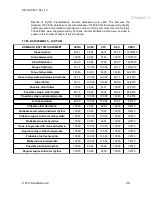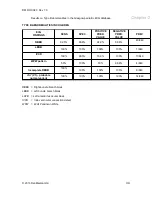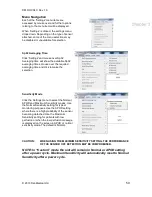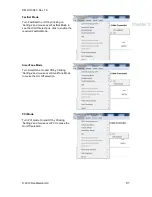
DM DOC 040 Rev 1.0
It is more useful as a monitoring tool: a sudden decrease in FEV1 or other spirometric measure in
the same patient can signal worsening control, even if the raw value is still normal.
Patients should be encouraged to record their personal best measures.
Spirometry can also be part of a bronchial challenge test, used to determine bronchial hyper
responsiveness to either rigorous exercise, inhalation of cold/dry air, or with a pharmaceutical
agent such as methacholine orhistamine.
Sometimes, to assess the reversibility of a particular condition, a bronchodilator is administered
before performing another round of tests for comparison. This is commonly referred to as a
reversibility test, or apost bronchodilator test (Post BD), and is an important part in diagnosing
asthma versus COPD.
D-MAS can measure the most common parameters measured in spirometry They are Vital
capacity (VC), Forced vital capacity (FVC), Forced expiratory volume (FEV) at timed intervals of
0.5, 1.0 (FEV1), 2.0, and 3.0 seconds, forced expiratory flow 25–75% (FEF 25–75) and maximal
voluntary ventilation (MVV), also known as Maximum breathing capacity. Other tests may be
performed in certain situations.
Results are given in both raw data (litres, litres per second) and percent predicted—the test result
as a percent of the "predicted values" for the patients of similar characteristics (height, age, sex,
and sometimes race and weight). Generally speaking, results nearest to 100% predicted are the
most normal, and results over 80% are often considered normal.
Review by a doctor is necessary for accurate diagnosis of any individual situation.
Forced vital capacity (FVC)
is the volume of air that can forcibly be blown out after full
inspiration, measured in litres. FVC is the most basic manoeuvre in spirometry tests.
Forced expiratory volume in 1 second
(FEV1) is the volume of air that can forcibly be blown
out in one second, after full inspiration. Average values for FEV1 in healthy people depend mainly
on sex and age. Values of between 80% and 120% of the average value are considered normal.
FEV1/FVC
(FEV1%) is the ratio of FEV1 to FVC. In healthy adults this should be approximately
75–80%. In obstructive diseases (asthma, COPD, chronic bronchitis, emphysema) FEV1 is
diminished because of increased airway resistance to expiratory flow; the FVC may be decreased
as well, due to the premature closure of airway in expiration, just not in the same proportion as
FEV1 (for instance, both FEV1 and FVC are reduced, but FEV1 is more affected because of the
increased airway resistance). This generates a reduced value (<80%, often ~45%). In restrictive
diseases (such as pulmonary fibrosis) the FEV1 and FVC are both reduced proportionally and the
value may be normal or even increased as a result of decreased lung compliance.
© 2013 DanMedical Ltd
39
















































